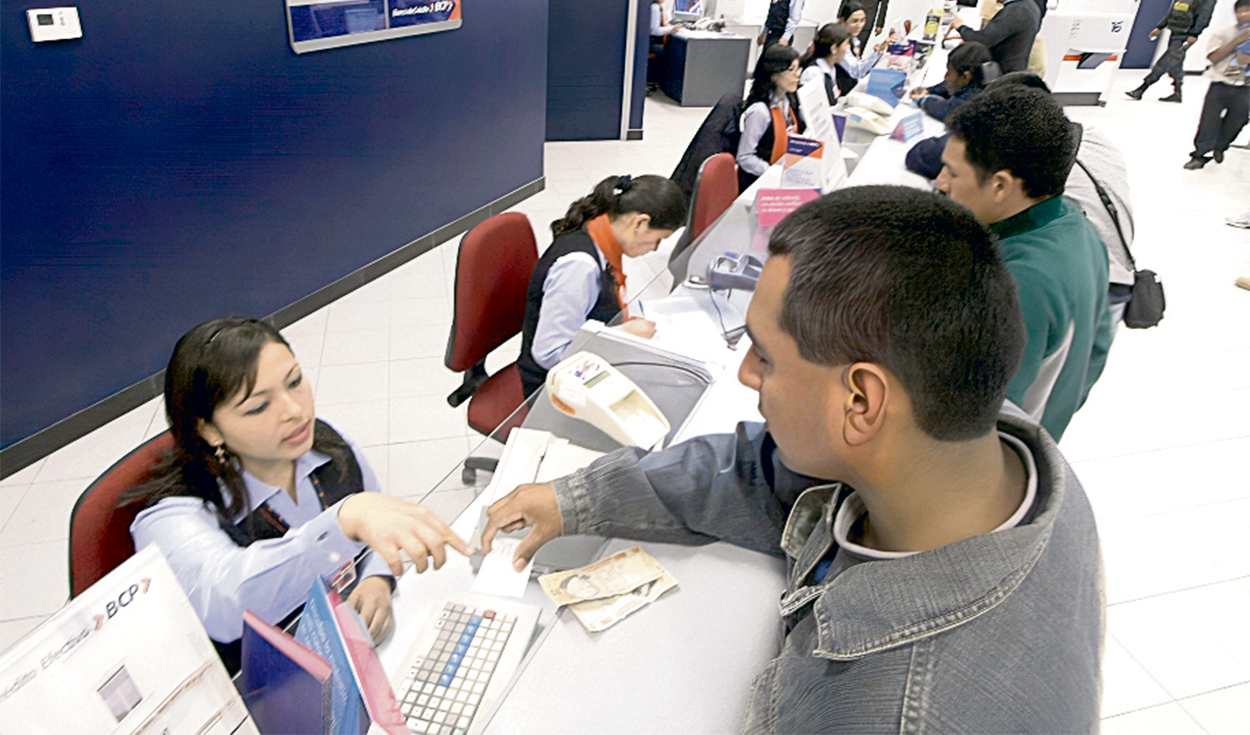
When the pandemic suddenly stopped economic activity, the Central Reserve Bank of Peru (BCRP) decided to bring the reference interest rate closer to 0% to make credit cheaper. Once the health catastrophe had passed, the excess liquidity due to the constant withdrawals of AFP, CTS and, in part, bonds, in an adverse global context, catapulted inflation and forced interest rates to be raised aggressively to contain it. That happened in Peru and China.
The BCRP knew how to bring the rate that sets the standard for credit operations in the local market to peaks of 7.75%, and now, for the fifth consecutive month of reductions, it placed it at 6.50%. Despite the significant drop of more than 100 basis points, Peruvians continue to pay high interest, says César Fuentes, director of ESAN’s Master’s Degree in Public Management.
structural failure
According to the SBS, the active interest rate – what the bank charges you for a loan – shot up to 15.92% on average; while the passive – what the bank gives you for depositing your money – is 3.59%. The differential between the two is called bank spread, and reaches 12.33% in soles.
The World Bank warns that Peru at a regional level is only surpassed by Brazil, but it integrates the hype of large-scale countries with rates that are inauspicious for their citizens and that favor banks more.
Fuentes explains that less will continue to be paid for deposits and only towards the first quarter of this year will the active interest rate go down since we have a “highly concentrated” banking sector, where four banks handle 80% of the deposits and loans. , competition is not encouraged and that is why interest margins are reduced at a slower rate.
“There is no explicit goal, but I estimate that the reference rate will close to 4% in 2024 if things go as the BCRP expects. They don’t go down that much because of a structural problem. There will only be an impact on consumption in the second quarter (after the reduction in active rates), ”he commented to La República.
Fuentes assures that in the face of the technical recession and the limited growth of the expected GDP, banks will continue to be “concerned” and therefore fewer loans will be generated; But he considers that the BCRP’s monetary policies “are going in the right direction.”
How are the rates?
Where there has been a reduction is in the rates on time deposits; Ergo, users make less money by betting on this product. The reduction has been up to 180 basis points, recalled Adrián Armas, manager of Economic Studies at the BCRP, who pointed out that the year-on-year growth continues to be higher in consumer loans and mypes.
Regarding mortgage loans, Fuentes adds that “perhaps for the fourth quarter” rates will be reduced, with the particular that banks tend to be more conservative with this long-term product.
According to data from the SBS, mortgage loans have an Annual Effective Cost Rate (TCEA) that ranges between 13.83% and 37.42%—for a loan for S/240,000 over 15 years. Said TCEA includes all the costs that the client will assume.
On the other hand, for a credit card without membership and with payment in installments, the maximum AER in the system goes from 31.16% (CMAC Cusco) to 147.14% (Falabella) and 152.23% (CRAC Cencosud Scotia ). Meanwhile, for personal loans – from S/10,000 to 12 months – the TCEA ranged from 30% (Mitsui Auto Finance and Caja Metropolitana Lima) to 116.98% (Alfin).
“In the second quarter, GDP and consumption will recover”
During the presentation of the January Monetary Program, Armas assured that from the second quarter of this year, once the threat of El Niño dissipates – which is expected to be moderate or mild – there will be a rebound in productive activity, as well as consumption. private sector and the reversal of the shocks that weighed down the GDP, such as the rise in prices.
According to the issuing entity, the Peruvian economy in the first quarter of this year will rise 0.7%; for the second, at 1.8% and in the third and fourth quarters, its variation will be 4.1% and 4.3%, respectively.
Private consumption, for example, after 0.2% in 2023, would grow 2.7% this year, still far from the 3.6% in 2022.
Figures
- 15.92% is the average lending rate in the banking system.
- 3.59% in liabilities. The differential is the spread (12.33%). Peru has one of the highest spreads.
- 4.0% would be the reference rate at the end of the year, according to Fuentes.
Source: Larepublica
Alia is a professional author and journalist, working at 247 news agency. She writes on various topics from economy news to general interest pieces, providing readers with relevant and informative content. With years of experience, she brings a unique perspective and in-depth analysis to her work.












